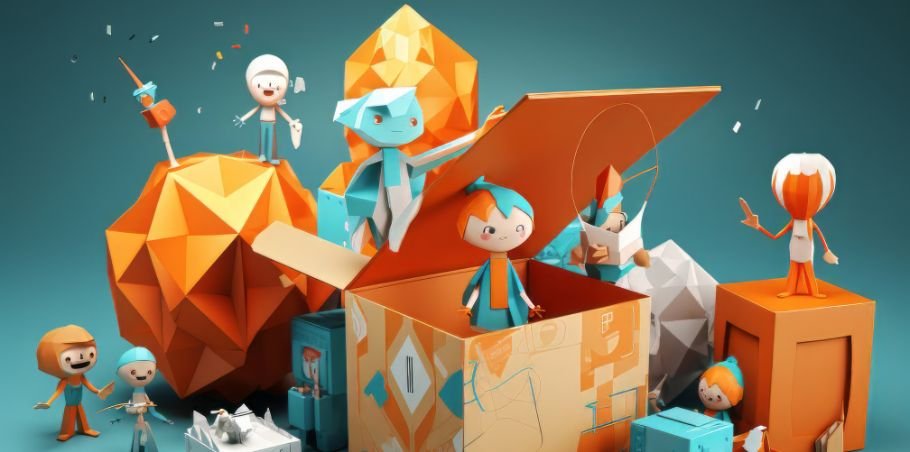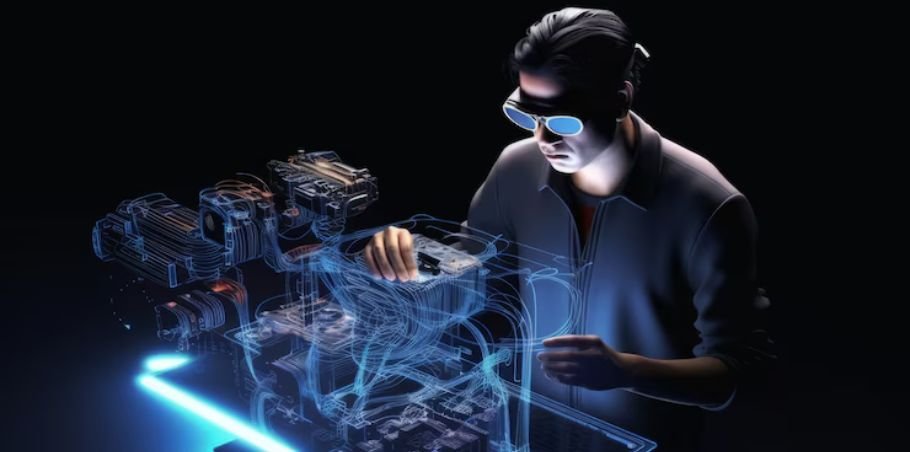Have you ever stumbled upon the word “Erothtos” and wondered what it means or why it captures so much attention? This article will dive deep into the origins, cultural significance, and interpretations of erothto, shedding light on its captivating essence.
What is Erothtos?
Erothtos is a term that has intrigued historians, philosophers, and modern thinkers alike. It’s a concept that bridges the gap between mythology, culture, and human psychology. Erothto appears to be a fictional or abstract term that may not have a widely recognized meaning in established literature, culture, or scientific domains. It could represent a concept tied to mythology, spirituality, or psychological symbolism, depending on the context in which it is used. Since the word doesn’t have a clear or known definition, it might have been created to evoke ideas related to passion, transformation, or mystical forces.
If Erothtos were a character or entity, it might be described as embodying dualities, such as creation and destruction, love and fear, or wisdom and chaos. It could serve as a powerful metaphor in stories, art, or theories about human nature, symbolizing deep emotional or spiritual truths.
If you’re referring to a specific concept, story, or work involving erothto, please share more details so that I can provide a more accurate and tailored explanation.
The Origin of Erothtos
The origins of Erothtos are believed to stem from ancient civilizations. These societies used the term to describe a force or entity associated with transformation, desire, or cosmic energy. The etymology is rooted in languages that highlight passion and the drive for change. The origin of erothto is steeped in mystery and intrigue, often traced back to ancient cultures where it was revered as a powerful and transformative force. Although not widely documented in historical texts or established mythologies, Erothtos is believed to embody the essence of primal emotions and cosmic energy.
Possible Mythological Roots: In many ancient civilizations, concepts similar to Erothtos were used to describe elemental forces of nature or divine entities that governed human passion, fate, and the cycle of life and death. These forces were often depicted in stories that sought to explain natural phenomena, emotional experiences, or the spiritual journey of individuals. It is possible that Erothtos was an interpretation or amalgamation of these ancient ideas, representing the eternal balance between opposing forces such as love and loss, creation and destruction, or peace and chaos.
Etymological Theories: The name “Erothtos” may have origins in ancient languages, drawing from words that denote desire, passion, or transformation. For instance, it could be linked to terms related to Eros, the Greek god of love and desire, or to mythological concepts that emphasize the duality of human nature and the power of emotions.
Cultural Significance: While there is no direct historical account of erothto, its symbolic representation has evolved over time, adapting to different cultural and philosophical interpretations. From spiritual practices in ancient rituals to modern reflections in art and psychology, Erothtos has come to signify a deeper, often subconscious, connection to human instincts and the metaphysical world.
If Erothtos were part of a specific cultural or religious tradition, it would likely have been worshipped or invoked during rites and ceremonies aimed at seeking guidance, transformation, or protection from the unseen forces of the universe.
Cultural and Mythological Significance
Erothtos is not just an abstract idea; it has deep roots in myths and cultural traditions across different societies. In various ancient myths, erothto is portrayed as a being or force that brings about change. Often, it embodies the dual nature of creation and destruction, echoing themes seen in numerous cultural narratives.
- Greek Influence: Some myths suggest Erothtos resembles Greek deities associated with passion and chaos.
- Eastern Interpretations: In some Eastern philosophies, Erothtos symbolizes the delicate balance between nature’s elements.
Stories and Folklore Surrounding Erothtos
Legends describe Erothtos as a shapeshifter or a spirit that influences human emotions. These stories often depict Erothtos appearing in times of great turmoil or passion, guiding or disrupting events in unforeseen ways.
Legends of Erothtos in Ancient Times
In one popular legend, Erothtos is depicted as a shapeshifting spirit that roams the world, capable of bringing about both great joy and deep sorrow. According to this story, Erothtos would visit villages disguised as a beautiful stranger. Those who encountered erothto would experience a profound emotional awakening, discovering passions or ambitions they never knew they had. However, this newfound energy came with a cost: once erothto departed, people would be left with a lingering sense of longing or an emptiness that could only be filled by embarking on a journey of self-discovery.
The Tale of the Twin Lovers
Another well-known folktale involving Erothtos tells the story of two lovers, Alora and Theron. According to the legend, Alora and Theron were deeply in love but belonged to rival families constantly at war. Desperate to be together, they sought the aid of erothto, hoping the mystical force would unite them forever. Erothtos, intrigued by their passion and determination, agreed to help but warned them of the consequences. It transformed their love into a bond so powerful that it connected their souls beyond death, yet their bodies could never be in the same place at the same time. From then on, Alora and Theron existed as spirits in constant pursuit of one another, one appearing at sunrise and the other at sunset. The story serves as a metaphor for the unattainable desires we all carry within us.
Erothto and the Enchanted Forest
In another tale, erothto is said to inhabit an enchanted forest where the trees whisper ancient secrets and the rivers shimmer with otherworldly light. Travelers who enter the forest seeking answers to life’s most profound questions must face Erothtos, who appears as a shadowy figure draped in mist. The spirit poses a single riddle, and only those who answer truthfully and from the heart can leave the forest enlightened and forever changed. Those who lie or act out of fear become lost, wandering the woods until they learn to confront their inner truths.
The Symbolism of Erothtos
Erothtos is laden with symbolism, making it a popular motif in literature, art, and even psychology. Writers and artists have long used Erothtos to explore themes like forbidden love, inner conflict, and the human struggle for balance. It appears in paintings that capture intense emotional moments and in poems that speak of yearning and transformation. Philosophers have debated the essence of Erothtos, with some viewing it as a metaphor for human desire and others seeing it as a representation of the eternal dance between order and chaos.
Erothtos in Modern Psychology
The influence of Erothtos extends into the realm of psychology, where it is used to describe complex emotional and mental states. Carl Jung’s concept of archetypes provides a useful framework for understanding erothto. It can be seen as an archetype representing the shadow self, embodying the parts of our psyche that we struggle to understand or accept. Erothtos is often associated with intense emotions such as passion, fear, and longing. Psychologists suggest that understanding these emotional aspects can lead to personal growth and self-awareness.
Erothtos in Popular Culture
In today’s world, Erothtos continues to influence various forms of entertainment and media.
- Movies and Television: Filmmakers have woven Erothtos into storylines to create compelling narratives. These stories often use erothto as a symbol of love, danger, or the supernatural, capturing the audience’s imagination.
- Books and Video Games: Authors and game designers use the concept of Erothtos to create rich, multi-layered worlds. It appears as a mythical force or a character driving the plot with themes of desire and transformation.
Impact on Spiritual Practices and Beliefs
Erothtos holds a unique place in spiritual and religious practices. Historically, rituals invoking Erothtos were performed to bring about transformation or to channel powerful energies. These practices were deeply symbolic, often involving offerings and prayers. In contemporary spirituality, some view erothto as a guide for personal transformation, using meditation or art to connect with this enigmatic force.
Art and Architecture Inspired by Erothtos
The influence of Erothtos is evident in various forms of art and even in architectural designs.
Famous Artworks: Many artists have captured the essence of Erothtos in their works. These pieces often feature dramatic contrasts and vivid imagery to evoke a sense of awe or contemplation.
Architectural Influence: Buildings inspired by Erothtos may include intricate designs that symbolize balance and transformation, drawing from ancient symbols and motifs.
Scientific and Metaphysical Theories
Scholars and scientists have also explored Erothtos from different perspectives. Some researchers suggest that Erothtos may represent natural forces or energy fields that influence human behavior. Although these theories are not widely accepted, they provide an interesting lens for understanding the concept. Metaphysical interpretations consider Erothtos a cosmic or spiritual force, connecting humanity with the universe. This view emphasizes the interconnectedness of all things and the cyclical nature of existence.
Common Misconceptions About Erothto
Despite its widespread presence in cultural and spiritual discussions, Erothtos is often misunderstood. Many people mistake Erothtos for purely negative or destructive energy. In reality, it represents a more nuanced balance between creation and destruction, mirroring life’s complexities. One of the most prevalent misconceptions about erothto is that it solely represents chaos or destruction. While it is true that erothto embodies forces of transformation, this doesn’t always mean negative outcomes. In many stories, Erothtos is a catalyst for personal growth, renewal, and emotional awakening. It symbolizes the duality of life the idea that creation often requires destruction and that change, even when painful, can lead to something beautiful and meaningful.
FAQs About erothtos
What is the main meaning of Erothtos?
Erothtos symbolizes transformation, desire, and the interplay between creation and destruction.
Is Erothtos a real historical figure?
No, erothto is more of a symbolic or mythological concept than a historical figure.
How is Erothtos used in modern psychology?
Erothtos is often analyzed through Jungian archetypes, representing the shadow self and complex emotions.
Are there rituals associated with erothto?
Yes, ancient rituals often invoked Erothtos for transformation or to channel powerful energies.
Where can I find references to Erothtos in popular culture?
Erothtos appears in various forms of media, including films, books, and video games, often as a symbol of passion or change.
Conclusion
Erothtos is a multifaceted concept that continues to fascinate people across generations. Its symbolism and influence span mythology, culture, psychology, and art, making it a rich subject for exploration. Whether viewed as a force of nature, a spiritual guide, or a psychological archetype, erothto invites us to ponder the mysteries of existence and our place within it.
- What is CHTIW? Unpacking the Origins, Meaning, and Global Buzz
- Inside Remixpapa: How Remix Culture Became a Global Movement
- Everything You Need to Know About adsy.pw/hb5
- Theboringmagazinne.com/: A Digital Sanctuary for the Creatively Curious
- What is CÑIMS? A Deep Dive Into the Concept, Features & Benefits
- Crichd: The Ultimate Free Streaming Destination for Cricket Fans















